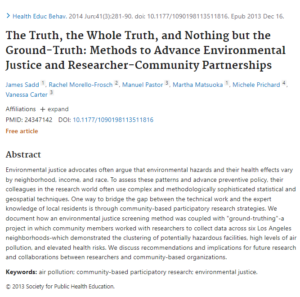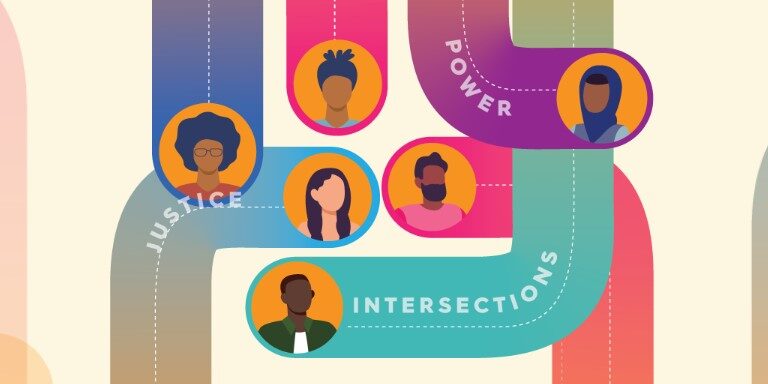 December 2013
December 2013
James Sadd, Rachel Morello-Frosch, Manuel Pastor, Martha Matsuoka, Michele Prichard, Vanessa Carter
Please note: reports dated earlier than June 2020 were published under our previous names: the USC Program for Environmental and Regional Equity (PERE) or the USC Center for the Study of Immigrant Integration (CSII).
Environmental justice advocates often argue that environmental hazards and their health effects vary by neighborhood, income, and race. To assess these patterns and advance preventive policy, their colleagues in the research world often use complex and methodologically sophisticated statistical and geospatial techniques. One way to bridge the gap between the technical work and the expert knowledge of local residents is through community-based participatory research strategies. We document how an environmental justice screening method was coupled with “ground-truthing”-a project in which community members worked with researchers to collect data across six Los Angeles neighborhoods-which demonstrated the clustering of potentially hazardous facilities, high levels of air pollution, and elevated health risks. We discuss recommendations and implications for future research and collaborations between researchers and community-based organizations.



